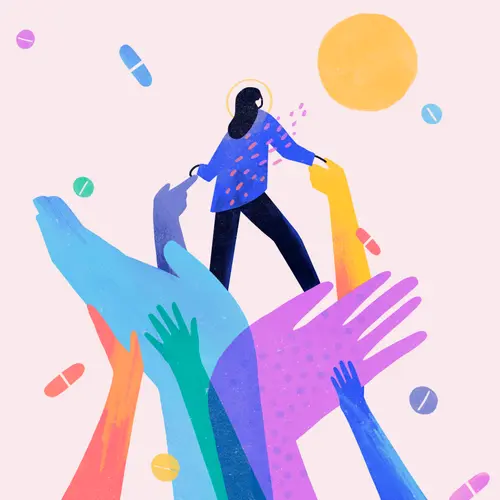Scrolling and swiping on social media. Watching TV. Reading work reports on your laptop.
It’s safe to say most of us spend a lot of time staring at screens. And that can be bad for our eyes. Blue light from electronics is linked to problems like blurry vision, eyestrain, dry eye, macular degeneration, and cataracts. Some people have sleep issues. Here’s what you need to know.
What Is Blue Light?
It’s one of several colors in the visible light spectrum. The others are:
- Red
- Orange
- Yellow
- Green
- Blue
- Indigo
- Violet
You may know them by the acronym ROY G BIV. Together, they make the white light you see when the sun -- the main source of blue light -- is shining. Fluorescent and LED (light-emitting diode) light bulbs also give off blue light.
Each color in the visible light spectrum has a different wavelength and energy level. Blue light has shorter wavelengths and higher energy than other colors. Some research shows a link between eye damage and short-wave blue light with wavelengths between 415 and 455 nanometers. Most of the light from the LEDs used in smartphones, TVs, and tablets has wavelengths between 400 and 490 nanometers.
Blue Light and Your Eyes
In large amounts, high-energy light from the sun -- like ultraviolet rays and blue light -- can boost your risk of eye disease. That’s raised concerns about whether blue light from digital screens is harmful. More research is needed.
Experts think digital eyestrain, or computer vision syndrome, affects about 50% of computer users. Symptoms include dry, irritated eyes and blurred vision.
Blue light may also damage your retinas. That’s called phototoxicity. The amount of damage depends on wavelength and exposure time. Animal studies show even short exposure (a few minutes to several hours) may be harmful. A filter that cuts 94% of blue light has been shown to lessen damage.
There’s evidence blue light could lead to permanent vision changes. Almost all blue light passes straight through to the back of your retina. Some research has shown blue light may increase the risk of macular degeneration, a disease of the retina.
Research shows blue light exposure may lead to age-related macular degeneration, or AMD. One study found blue light triggered the release of toxic molecules in photoreceptor cells. This causes damage that may lead to AMD.
Blue Light and Sleep
Screen time, especially at night, is linked to poor sleep. The blue light from electronic devices messes with your circadian rhythm, or sleep cycle. It signals your brain to wake up when it should be winding down. In one study, as little as 2 hours of exposure to blue light at night slowed or stopped release of the sleep hormone melatonin. Powering down your digital devices at least 3 hours before bedtime can help.
Blue Light and Cancer
Blue light exposure might raise your risk for certain cancers. One study found that people who work the night shift are at greater risk for breast, prostate, and colorectal cancers.
Blue Light and Kids
Your child’s eyes don’t filter blue light as well as yours do. Too much of it from device screens may raise their chances of developing obesity, nearsightedness, and attention focusing issues. At night, it may cause their body to release melatonin even more slowly than it does yours. To protect their eyes, limit your child’s screen time. And have them put all electronic devices, including handheld game devices, away at least a half hour before bedtime.
Blue Light and Mental Health
Nighttime exposure to blue light was linked to depressive symptoms in animal studies. But exposure to blue light during the day may have the opposite effect. It’s been used to treat seasonal affective disorder, or SAD. That’s a form of depression related to the changing of the seasons. Research shows 20 minutes of blue light exposure in the morning helps ease SAD symptoms.

